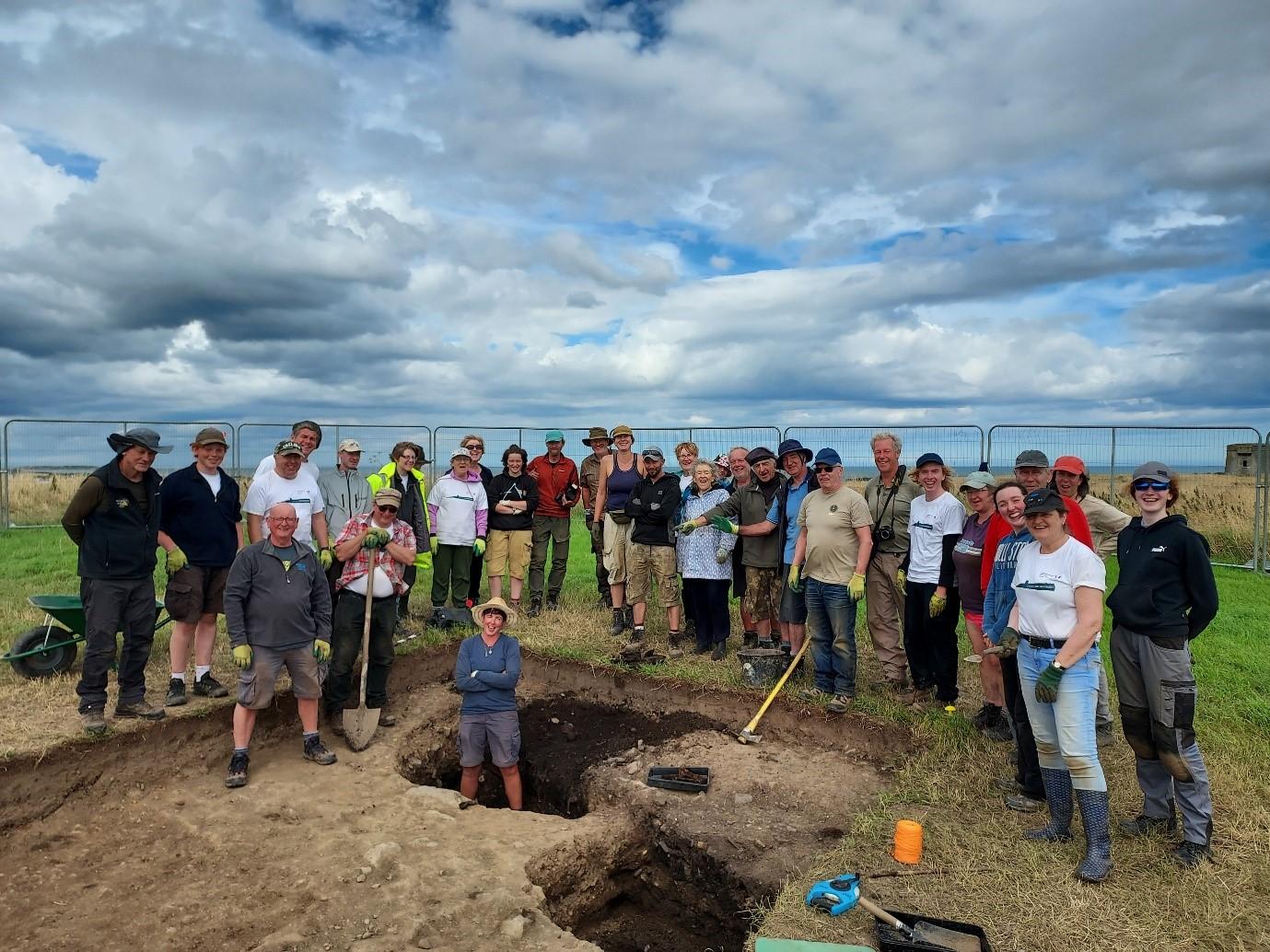Dublin projects highlighted in new booklet celebrating 25 years of Heritage Officer work
A special Heritage Council publication featuring stories from heritage officers in every county is being launched today to mark 25 years since the Heritage Officer Network was founded.

The publication can be read in full on the Heritage Council website here: https://www.heritagecouncil.ie/content/files/Opening-the-Door-to-Irelands-Heritage.pdf
A special Heritage Council publication featuring stories from heritage officers in every county is being launched today to mark 25 years since the Heritage Officer Network was founded. The booklet, ‘Opening the door to Ireland’s heritage’ details one key heritage project from each local authority from the last three years which collectively, highlight the enormous contribution the Network has made to the preservation of our heritage over the last quarter of a century.
The booklet features four Dublin-based projects, including including the ‘Digging Drumanagh’ project which focuses on the community-based excavation of a headland in Fingal, north County Dublin where extensive evidence for contact with the Roman world has been uncovered. The findings have made major contributions to our knowledge of Ireland’s Iron Age-and Roman- past.'

Meanwhile, megalithic tombs, prehistoric earthworks, early medieval churches and castles across the Dublin Mountains were brought to life through the Dublin Mountains Community Archaeology project. This initiative developed guided walks, community talks, the development of an archaeology trail with signage, and the creation of interpretive content all with the aim of increasing engagement with this lesser-known heritage resource on the doorstep of the capital city.
The ’More than Concrete Blocks’ project commissioned by Dublin City Council is a pioneering three-volume series of architectural history books, which are richly illustrated and written for the general reader. The series considers the city as a layered and complex place. It makes links between Dublin’s buildings and Dublin’s political, social, cultural and economic histories.
Finally, one of South Dublin’s most recognisable and historic buildings, the Clondalkin Round Tower, was reimagined and recreated as a crochet lace tower in an innovative project called ‘Threading the Tower’. This project aimed to revitalise and encourage the craft of crochet lace in the local community of Clondalkin, which was once a centre of cottage industry supplying lace to the atelier of Irish fashion designer Sybil Connolly in the 1950s and 1960s.
In a partnership between the Heritage Council and local authorities, the first heritage officers were appointed in 1999 in Kerry, Sligo and Galway with the aim of raising awareness of heritage issues within the local authority and among local communities. Since then, the heritage officer network has become synonymous with the protection and promotion of Ireland’s heritage and for the first time in 2021, every local authority in the country had appointed somebody to the role.
While highlighting the important work they do, the stories in the publication also offer a stark insight into what may have been lost were it not for the heritage officers. Mangan’s Clock in the heart of Cork city may have fallen into disrepair. The most historic buildings in Ballyshannon or Listowel may have been left derelict and allowed to crumble. The natural beach and dune habitats along the coast of Wicklow may have become irrevocably degraded and the craftsmanship of dry-stone walling on Inis Oirr may have receded.
The publication can be read in full on the Heritage Council website here:
https://www.heritagecouncil.ie/content/files/Opening-the-Door-to-Irelands-Heritage.pdf
More information about the Heritage Officer Network is available here:
https://www.heritagecouncil.ie/our-work-with-others/county-heritage-officers
Speaking on the launch of the booklet, Chair of the Heritage Officer Network Amanda Pedlow said:
“It is deeply satisfying to see documented in this publication the influence of the Heritage Officer Network in shaping our approach to heritage conservation and protection. Although we work as individuals at local authority level, what is clear from these pages is that the real strength of the Network is in the collective. These stories cover only a snapshot of recently completed projects from current heritage officers, so when we factor in the hundreds of past projects completed since 1999, it brings into the focus the enormous impact that the Local Authority Heritage Officer Programme has had.”
Chairperson of the Heritage Council Martina Moloney added:
“I have had the pleasure of working extensively with our Heritage Officers over many years and am constantly amazed by the shear variety of their work which is excellently captured in this beautiful publication. Not only do they provide advice, guidance, and information on all aspects of heritage, but they also secure funding, undertake research, collect data, and develop and lead a multitude of highly impactful and engaging projects. Raising awareness locally, Heritage Officers inspire communities to value and take ownership of their important local heritage in all its forms. What their work achieves, ultimately, is that it opens the door to our heritage for people across Ireland and further afield, so that it can be enjoyed and appreciated by everyone.”
John Mulholland, Chair of the CCMA Rural Development, Community, Culture and Heritage (RCCH) Committee also attended the launch, and said:
“What has always stood out to me about the Heritage Officer Network is the range and number of individuals, groups and funders involved in the projects they undertake. It is very difficult to keep such a diverse range of interested parties singing off the same hymn sheet and getting the job done. This is the silent but tireless work of the Heritage Officers at play, to whom we owe a great debt of gratitude. On behalf of the CCMA, I commend them for their dedication.”
